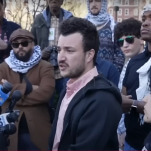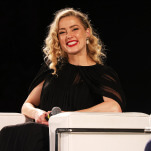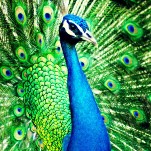Wonder Woman Is the Superhero You've Been Waiting For
EntertainmentWhile we’re waiting for Wonder Woman to start, my mom tells me a “when I was young” story that I’ve heard a thousand times. The details of the story—cobbled from memories now 50 years old—shift slightly but the fundamentals remain the same: every couple of months or so, her mother would drive her to the Greyhound Station about an hour away for the sole purpose of buying Wonder Woman and Supergirl comic books. It was the only place around that bothered to sell those titles. There was a closer comic book store, a storefront in the downtown of the mid-size, Midwestern town of her childhood, but the owner refused to carry either of DC’s most famous heroines. The owner insisted, my mother remembers, that the boys whose eager purchases paid his rent had no interest in reading about girls; so the girls who were in fact interested went to the edge of town.
I’ve heard this story for years. I heard it when Wonder Woman comics were easy to find on a Barnes & Noble shelf or when Supergirl was adapted for television or even when Agent Carter earned a television spinoff; the story gets recycled anytime a woman is center stage in the realm of superheroes, no matter the quality. Every time I hear this story, that particular bratty teenage “Ugh, Mom!”—a feeling as much as an exclamation—returns. I always treated this story as the kind of cost that mothers levy on daughters. That my mom, in return for her actions as my co-conspirator in the hunt for “strong female leads,” demanded acknowledgment, a yes, I get it, it was so hard in your day. I realized after watching Wonder Woman that I had been misinterpreting this story and its demands for decades.
It’s appropriate then that, after a short and obligatory Justice League tie-in that serves as the movie’s frame, Wonder Woman turns its focus to the relationship between women—particularly the relationship between a mother and daughter. We’re transported to Themyscira, the home of Diana Prince (the fantastic Gal Gadot), an idyllic island inhabited by the strong but peaceful Amazons. The island, ruled by Diana’s mother Hippolyta (Connie Nielsen), tries to protect her daughter, the only child on the island, from the harm by concealing Diana’s true identity. She refuses to let Diana learn how to fight, refuses to let her essentially be an Amazon, but her decision is undermined by an eager Diana and her warrior aunt, Antiope (Robin Wright).
In the course of the family disagreement, the history of the Amazons is told to Diana, conveniently illustrated in a text. It’s a pivotal moment for the movie, origin stories can often be tedious and their methods (an often overwrought soliloquy or constant flashbacks) can grind a movie to a halt. But director Patty Jenkins approaches the origins of Diana’s origin story deftly and creatively. The illustrated history is essentially animated; a late-Renaissance, Mannerist painting come to life. As the story is narrated, the classical bodies of the gods (the conflict of Zeus and Ares) twist and turn, their drapery elegant, their bodies even more so. The scene is incredibly painterly and that visual aesthetic repeats itself throughout the entire movie. This kind of luminosity—this painterliness—is Wonder Woman’s visual credo. It is elegant and captivating.
-

-

-

-

-

-

-

-

-

-

-

-

-

-

-

-

-

-

-

-

-

-

-

-

-

-

-

-

-

-

-

-

-

-

-

-

-

-

-

-








































